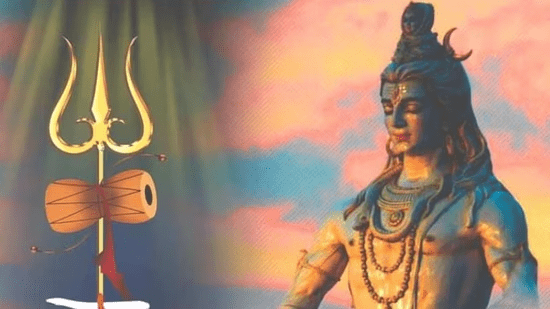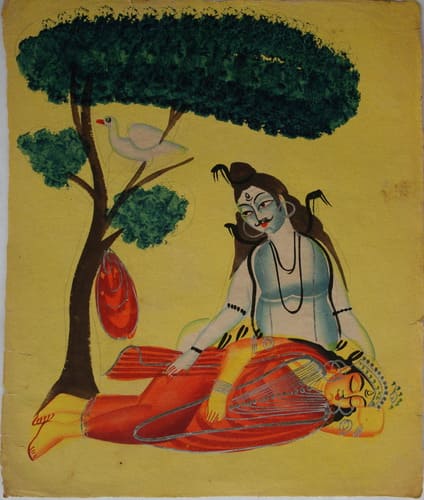Mahashivaratri is a Hindu festival celebrated annually in honour of the god Shiva. The name also refers to the night when Lord Shiva performs the heavenly dance. This post is about the Mahashivratri, Significance of Mahashivratri and Why is Mahashivratri Celebrated?
Table of Contents
In every month of the luni-solar Hindu calendar, there is a Shivaratri – “night of Shiva” – on the day before new moon. But once a year, in late winter and before the arrival of Summer (February/March), this night is called “Maha Shivaratri” – “the Great Night of Shiva“. This day falls in the month of Phalguna as per the North Indian Hindu calendar and in Magha as per the South Indian Hindu calendar.

It is a major festival in Hinduism, and this festival is solemn and marks a remembrance of “overcoming darkness and ignorance” in life and the world. It is observed by remembering Lord Shiva and chanting prayers, fasting, and meditating on ethics and virtues such as honesty, non-injury to others, charity, forgiveness, and the discovery of Lord Shiva. Ardent devotees keep awake all night.
Others visit one of the Shiva temples or go on pilgrimage to Jyotirlingams. The festival originated in circa the 5th century CE. According to the South Indian calendar, Mahashivaratri is observed on Chaturdashi Tithi during Krishna Paksha in the month of Magha, and in other parts of India, on 13/14 night of Krishna Paksha in Phalguna of Hindu calendar, the Gregorian date however remaining the same.
In Kashmir Shaivism, the festival is called Har-ratri or phonetically simpler Haerath or Herath by Shiva devotees of the Kashmir region.
Significance of Mahashivratri
Mahashivratri is very significant for people who are on the spiritual path. It is also very significant for people who are in family situations, and also for the ambitious in the world. People who live in family situations observe Mahashivratri as Shiva’s wedding anniversary. Those with worldly ambitions see that day as the day Shiva conquered all his enemies.
But, for the ascetics, it is the day he became one with Mount Kailash. He became like a mountain – absolutely still. In the yogic tradition, Shiva is not worshipped as a God, but considered as the Adi Guru, the first Guru from whom the science of Yoga originated. After many millennia in meditation, one day he became absolutely still. That day is Mahashivratri. All movement in him stopped and he became utterly still, so ascetics see Mahashivratri as the night of stillness.
Mahashivratri: Why do we celebrate Mahashivratri
As per Hindu culture, from the birth of Lord Shiva to the legend of Neelkanth and marriage with Goddess Parvati, there are several stories and beliefs on why we celebrate Mahashivratri.
- It is believed that after the death of Sati, Lord Shiva went into deep meditation. Sati reincarnated as Parvati. Therefore, Mahashivratri marks the union of Shiva and Parvati on the 14th day of the dark fortnight in the month of Phalguna

- As per Hinduism, it is also believed that Shiva performed the dance of preservation, creation and destruction on this night
- However, as per some Mahashivaratri is a thanks-giving ceremony. This story talks about a time when Lord Shiva saved the world. He drank and held the poison in his throat instead of swallowing it which turned his throat blue. From there, the name ‘Neelkantha’ originated.
Read Also: Who is more powerful Shiva or Vishnu?
What do people do on the occasion of ‘Mahashivratri’
On the occasion, devotees across the country are seen flocking to temples, that often witness long queues from as early as the break of the dawn and chants of ‘Om Namah Shivaya (ॐ नमः शिवाय)‘ and ‘Har Har Mahadev (हर हर महादेव)‘ reverberate. Special prayers are offered in all Shiva temples throughout the holy night.
The ritual of fasting and Rudra-Abhishek
Following the traditional rituals, devotees observe fasts and are also seen worshipping the ‘Shivling,’ an iconic representation of Shiva. On the occasion of Mahashivratri, devotees offer ‘Rudra-Abhishek‘ or special ordination to the Shivling where they bathe the ‘Shivling’ with different substances and each of them has a specific significance. Devotees use water, curd, sugarcane syrup, milk, honey and other things for ‘Rudra-Abhishek. Other important offerings that are mandatorily used for the ‘Abhishek’ are Datura flower and fruit.
Thanks for reading the Significance of Mahashivratri | Why is Mahashivratri Celebrated? – Indian Festivals. Please do share with others too.
Read Also: Significance of Holi | Why is Holi Celebrated? – Indian Festivals
Reference:
